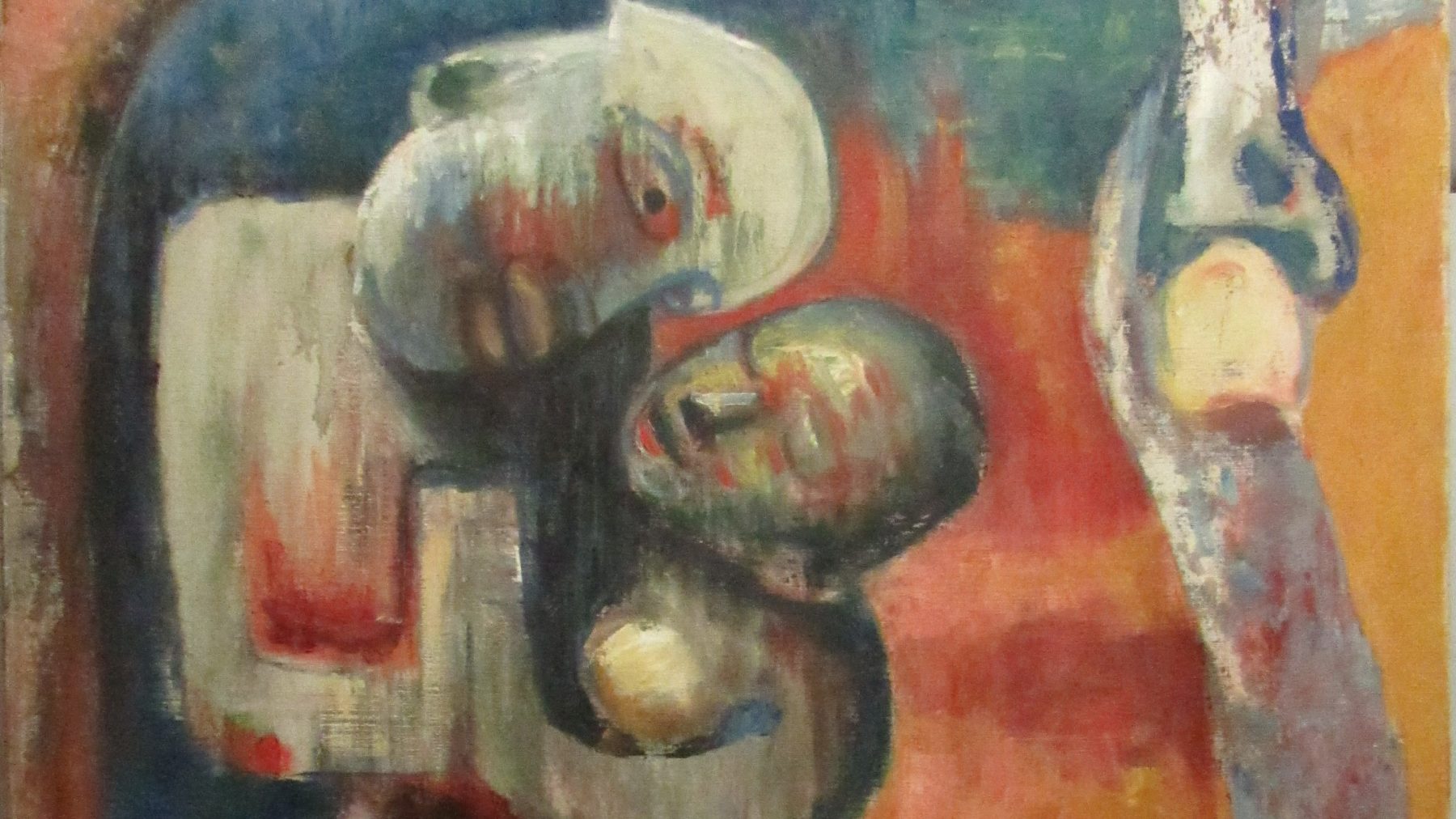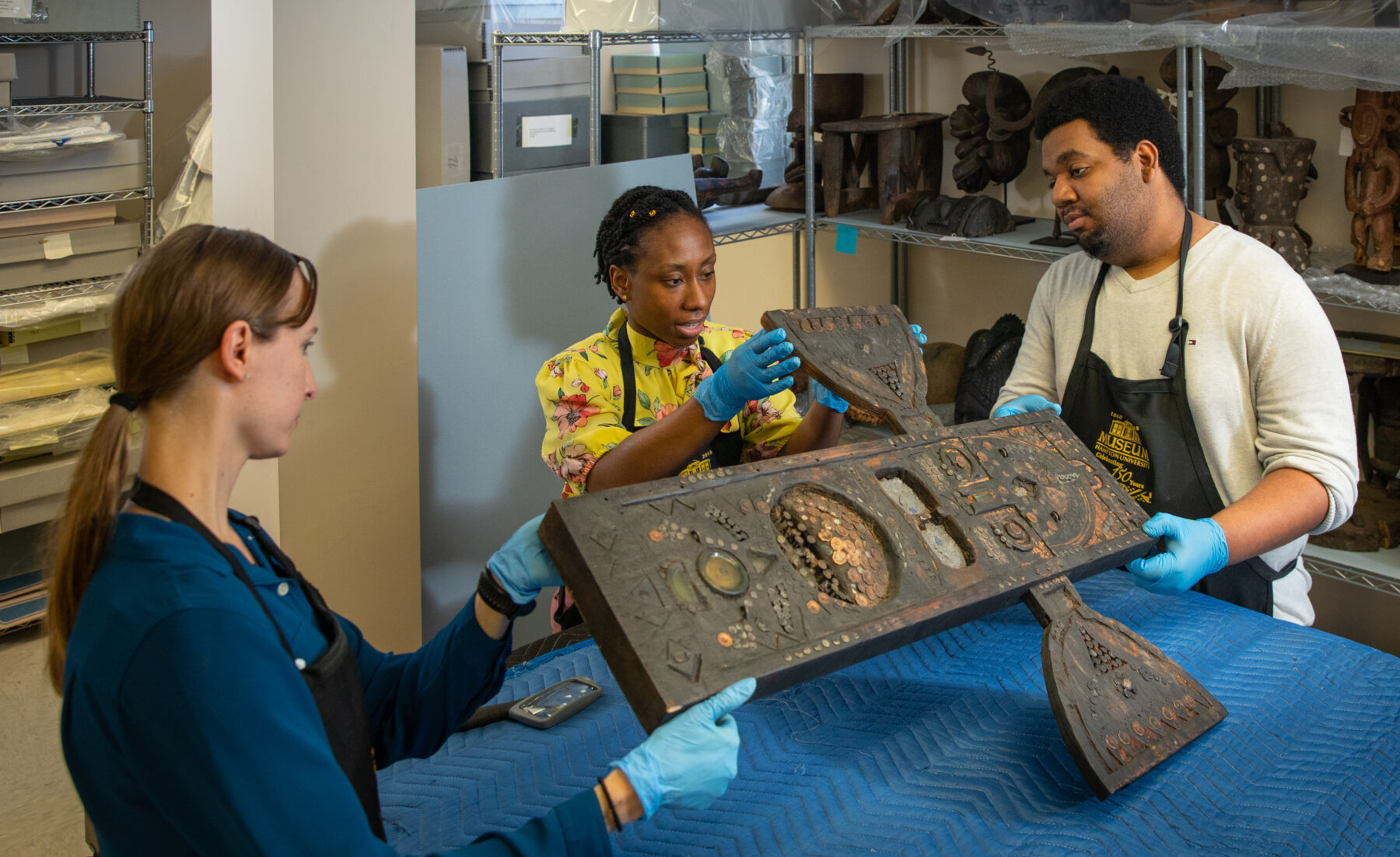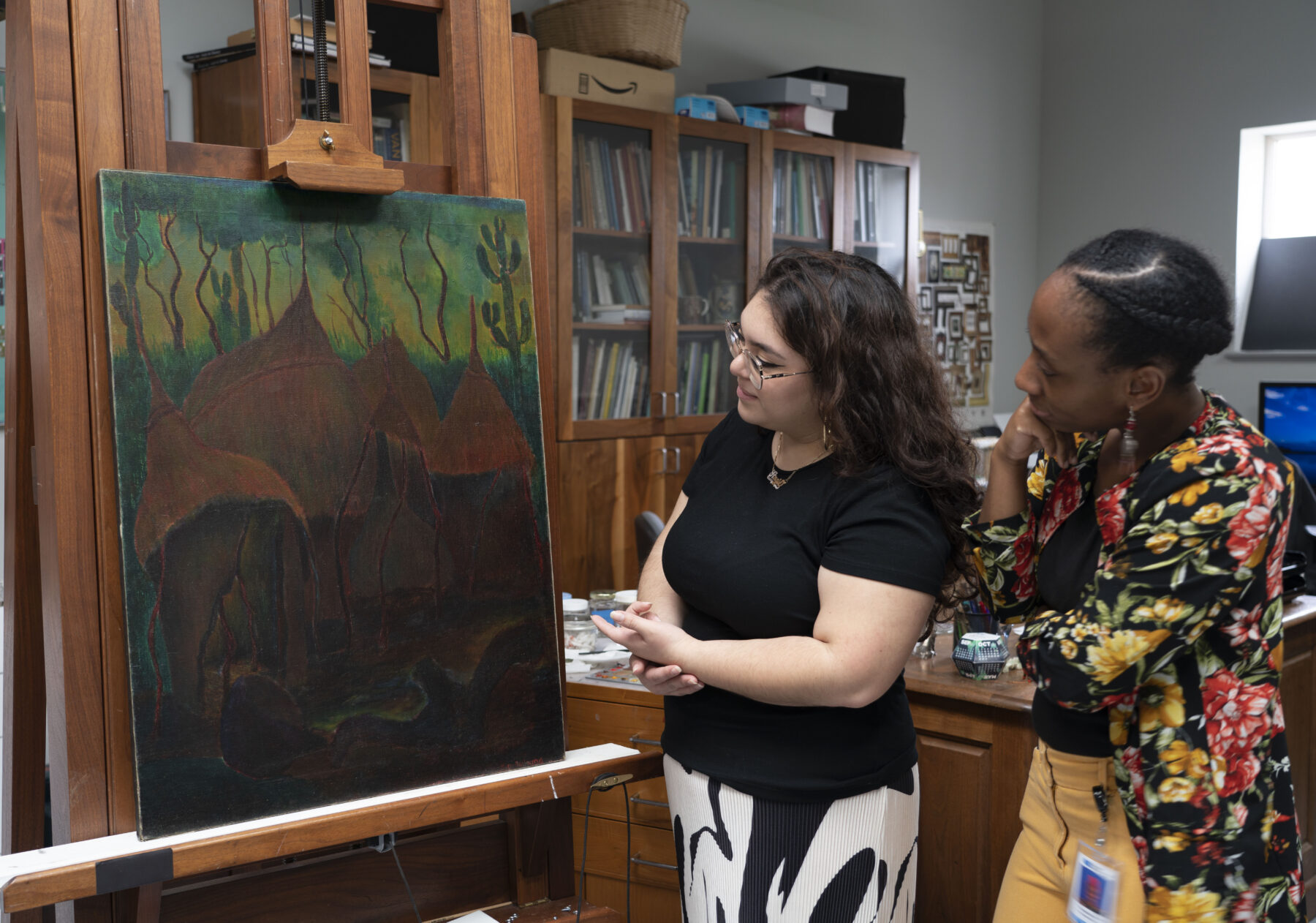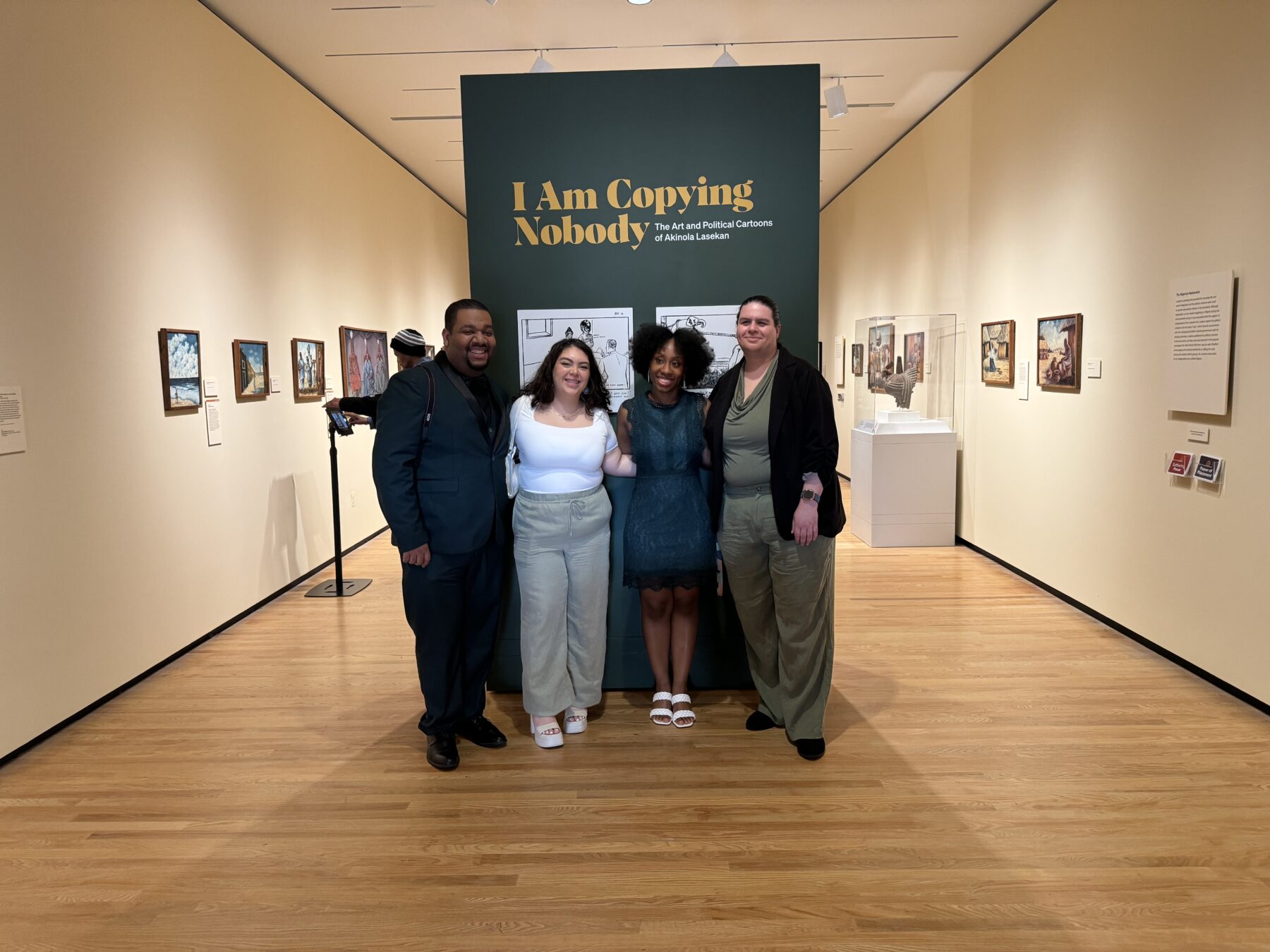The Garden of Eden v.s. The Garden of Eden with the Fall of Man


Biblical stories have been depicted in art for centuries. Some of the most well known depictions are the scenes from the book of Genesis, painted on the ceiling of the Sistine Chapel by Michelangelo from 1508 – 1512. Among the several scenes, The Creation of Adam is the most widely recognized. Fast forward 505 years to 2017 to see another example of biblical art created by Harmonia Rosales. In the Creation of God, Rosales reimagines Michelangelo’s The Creation of Adam and the biblical story by painting God and Adam as black women. Although these two works of art reference the same biblical story, they hold different messages. For this post we will be taking a closer look at Jimo Bola Akolo’s The Garden of Eden and Peter Paul Rubens’ and Jan Brugehel the Elder’s The Garden and Eden with the Fall of Man to see how the same idea or story can be depicted differently by artists.
Who are the Artists?
Before we dive into the art, let’s first learn more about the artists.
Jimo Bola Akolo (b.1934/5 ), is a master painter and sculptor from Nigeria who comes from a line of Yoruba wood carvers. Akolo received his formal art training from the Nigerian College of Art, Science and Technology in Zaria, Nigeria. It was at this institution that he became a part of the Zaria Art Society. He also studied at the Hornsey College of Art in London from 1962-1963 and the University of Indiana from 1964-1965. He later became a faculty member at Ahmadu Bello University, a position he held for over three decades.
Peter Paul Rubens (1577 – 1640), like Jan Brueghel the Elder, was a Flemish painter during the Baroque art period. Rubens started his art study in Antwerp, Belgium. He later traveled to Italy to personally study classical art. He also did commissions of portraits and altarpieces while in Italy. Rubens would become well known for his artistic style that often depicted religious and mythical scenes.
Jan Brugehel the Elder (1568 – 1625), also known as Velvet Brugehel because of his soft and delicate brushwork, was a famous landscape painter who often depicted exotic animals and plants in his work. Brugehel supposedly received his first art training from his maternal grandmother. He would collaborate with other artists such as Peter Paul Rubens to create an art piece. While Brueghel painted the landscape including any animals, Rubens would handle the human figures.
The Art
The Garden of Eden with the Fall of Man was created by the Flemish painters, Peter Paul Rubens and Jan Brugehel in 1615. Rubens painted Adam and Eve, the tree behind the two, the horse, and the serpent in the tree. Brueghel painted the rest of the background including the plant and animal life. The painting depicts the moment Eve is about to give Adam a fruit from the Tree of Knowledge. Surrounding them is the beauty of Eden and its animals including tigers, a turkey, dogs, fishes, and a bunny. The beauty and serenity in the background brings awareness to what Adam and Eve are about to lose after eating the forbidden fruit and the magnitude of their mistake. Rubens painted the tragic couple with fair white skin and goldish brown hair. Wrapped around the branches of the tree, the serpent looks down at Adam and Eve, watching its plan unfold.

The Garden of Eden was created by Nigerian artist, Jimo Bola Akolo in 1964. Akolo gives viewers an abstract interpretation of the Garden of Eden. Although this piece is titled The Garden of Eden, we cannot pinpoint an actual garden in the scene. Instead, the main focus is on Adam and Eve who are locked in a warm and loving embrace. The two resemble statues that were carved from one material, seen through their hands which look to be fused together. A serpent borders Adam and Eve with a forbidden fruit in its mouth.


Compare and Contrast
The Garden of Eden and The Garden of Eden with the Fall of Man, despite their stark contrasts, have some similarities. The first of these similarities being the serpent and the forbidden fruit. The serpent and fruit are very important in explaining the banishment of Adam and Eve from the Garden of Eden. The artists chose to include the serpent and fruit because they are visual cues that help us recount the tragic story of Adam and Eve without much effort. The second similarity that the two paintings rely heavily on, is the viewer’s own knowledge of the biblical story it references. Again, the serpent and fruit, Adam and Eve, even the titles of the pieces are visual cues that allow the viewer to understand what the piece is about. The two paintings only give us a snapshot of a longer story. The three artists are essentially relying on the visual cues to not only allow the viewer to understand the context of the piece but also understand what is going to happen next in the story despite that scene not being depicted visually.
Another important contrast is the serpent despite it also serving as a comparison between the two pieces. With all the different visuals in The Garden of Eden with the Fall of Man, you might have missed the serpent located above Adam and Eve. The creature blends in with the tree and background, emphasizing its background role in manipulating Eve and Adam to eat the forbidden fruit. While the serpent is in the background, Eve is front and center in the piece. Although Eve and Adam have light shining on their bodies, Eve has a brighter light on her almost as if it is a spotlight. This light on Eve brings considerable attention to her and her action of taking the fruit from the tree and giving it to Adam. Because of this, Rubens ultimately makes Eve the main antagonist. Although the serpent is present and it was the serpent’s trickery that misled Eve, the spotlight on her exposes her as the harbinger of hers and Adam’s unfortunate faith. In other words, in this piece Eve is the “bad guy”.


In The Garden of Eden, we get another deception of the serpent and Eve. While Ruben’s serpent blends in with its background, Akolo’s serpent is a major focal point. Its body is so big, parts of it escape from the canvas. We do not see Eve in the act of giving the fruit to Adam, instead we have a more loving depiction of Eve as she embraces Adam which is in contrast to The Garden of Eden with the Fall of Man where we see Eve actively giving the forbidden fruit to Adam. In The Garden of Eden, the serpent has the fruit in its mouth. This cements its role as the main antagonist and the harbinger of Eve and Adam’s unfortunate faith.
Conclusion
While Rubens and Brugehel chose to paint a realistic scene of Eve giving the forbidden fruit to Adam, Akolo painted an abstract version of the famous garden that showcases a loving Eve and Adam. As seen from The Garden of Eden by Jimo Bola Akolo and The Garden of Eden with the Fall of Man by Peter Paul Rubens and Jan Brugehel the Elder, different artistic depictions of the same story can allow us to see the story in another way.
Art Exercise! Analyze the two pieces on your own and make a list of your comparisons and contrasts.


References
Adam and Eve. Wikipedia.
Collection of Harmonia Rosales. Harmoniarosales.com
Gallery of Sistine Chapel ceiling. Wikipedia
Harmonia Rosales. Wikipedia
Jan Brueghel the Elder. Getty Museum Collection
Jan Brueghel the Elder. National Gallery of Art
Jan Brueghel the Elder. Wikipedia.
Jan Brueghel the Elder and Peter Paul Rubens: The Garden of Eden with the Fall of Man. Mauritshuis.
Liedtke, Walter. Peter Paul Rubens (1577–1640) and Anthony van Dyck (1599–1641): Paintings. The Metropolitan Museum, 2003.
Peter Paul Rubens. The National Gallery.
Peter Paul Rubens. Wikipedia
Sir Peter Paul Rubens. National Gallery of Art.
The Creation of Adam. Wikipedia
Explore other articles like this
The Andrew W. Mellon Fellowship: Now and Beyond
In this post, I will highlight some of the accomplishments of this project and address two main takeaways that can help those looking to reproduce a similar fellowship program.
Art Spotlight: The Abandoned Hut by Mordecai Buluma
In this blog post Angie and Tashae discuss the symbolism behind The Abandoned Hut by Mordecai Buluma as well as the conservation treatment used to prepare it for exhibition.
Opening of I am Copying Nobody the Art and Political Cartoons of Akinola Lasekan
On April 13, 2024, I Am Copying Nobody: The Art and Political Cartoons of Akinola Lasekan opened at the Chrysler Museum of Art. Here are some highlights from the exhibition.


